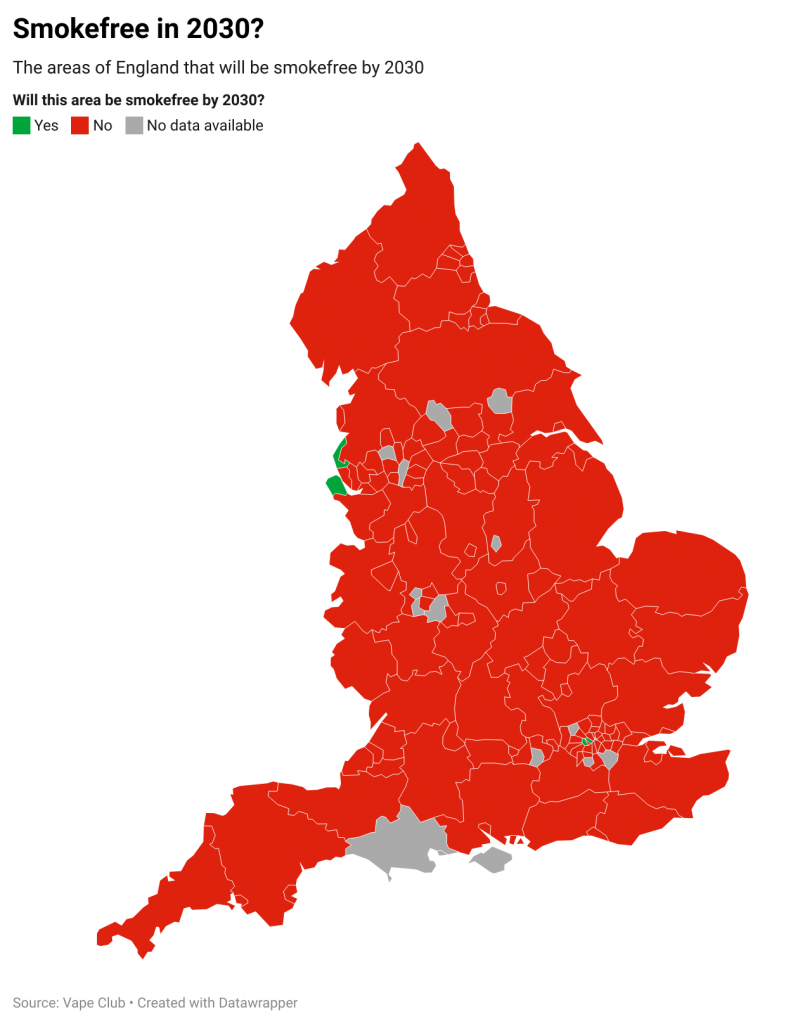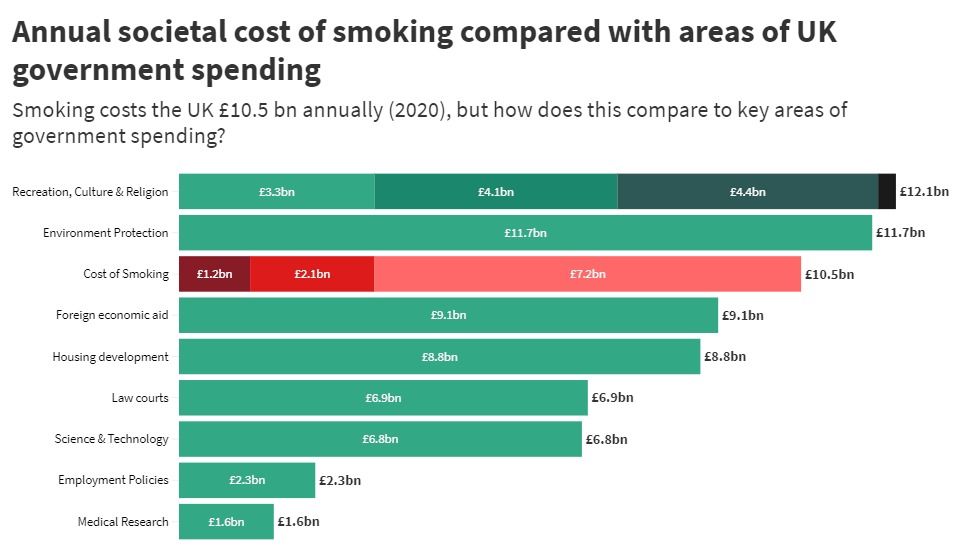In 2017, the UK’s Tobacco Control Plan listed the government’s plans for a “Smoke Free” England, which aims to reduce smoking rates to 5% or less, and would equate to roughly one in 20 people being smokers. The finalized plan was rolled out in 2019, with a target to achieve the ‘Smoke-free’ status by 2030.
Sadly, recent forecasts are revealing that 97% of England is likely to miss this target, and only 4 out of the 135 existing counties are believed to be on track. These figures were calculated based on current PHE smoking prevalence and quit rates.
Besides the obvious public health implications, this delay is predicted to cost over £40.4 billion in local authority social care and NHS costs. In fact, according to NHS data, there were over half a million smoking related hospital admissions in 2019/2020 alone. This figure is 10% higher than it was a decade earlier.
Cost figures were calculated by using data from smoking cessation charity ASH, and a press release explained that the PHE report study investigated how likely it is that the goal will be reached at a local level, the cost of missing it, and what action can be taken to reach it.
Where in England will be Smokefree by 2030?
Hammersmith & Fulham is set to be the first area in England to hit the government target, 5 years early in 2025. In 2016, the borough was reported to have one of the highest smoking rates in London. Since then its trajectory has changed with a high quit rate – the latest PHE data shows that 7.54% of smokers in the borough quit annually.
Counties to hit the ‘Smoke-free by 2030’ target
| Region | Area Name | Smokers in area (%) | Quit rate (%) | What year for ‘Smokefree’? |
| London | Hammersmith and Fulham | 10.3 | 7.54 | 2025 |
| London | Westminster | 10.5 | 5.47 | 2028 |
| North West | Wirral | 10.7 | 4.85 | 2029 |
| North West | Sefton | 9.5 | 4.18 | 2029 |
Worst performing counties
| West Midlands | Staffordshire | 13.9 | 0.26 | 2289 |
| South West | Bristol | 18.0 | 0.27 | 2310 |
| West Midlands | Worcestershire | 10.8 | 0.12 | 2440 |
| London | Enfield | 15.8 | 0.31 | 2816 |
| London | Havering | 13.2 | 0.06 | 2983 |
Havering in London won’t reach the target until the year 2983 according to the research, with Enfield, Worcestershire, Bristol and Staffordshire also being amongst the worst performing counties.
The smoke-free by 2030 target includes an ultimatum for the industry to make smoked tobacco obsolete. It was set out by the health secretary, Matt Hancock, to combat one of the biggest challenges to living healthy lives, and a major cause of inequalities. ‘Smoke-free’ by government standards is when the smoking prevalence is below 5% of the population.
According to PHE’s 2021 report on vaping, evidence shows that the highest quit rates (74%) were achieved when the attempt involved people using a licensed medicine and a vaping product one after another. In every region in England, quit rates involving a vaping product were higher than any other method. These ranged from 49% in the South West to 78% in Yorkshire and the Humber.
Representatives from the counties are called on to encourage smoking cessation to aim closer to the ‘Smokefree by 2030’ target.















